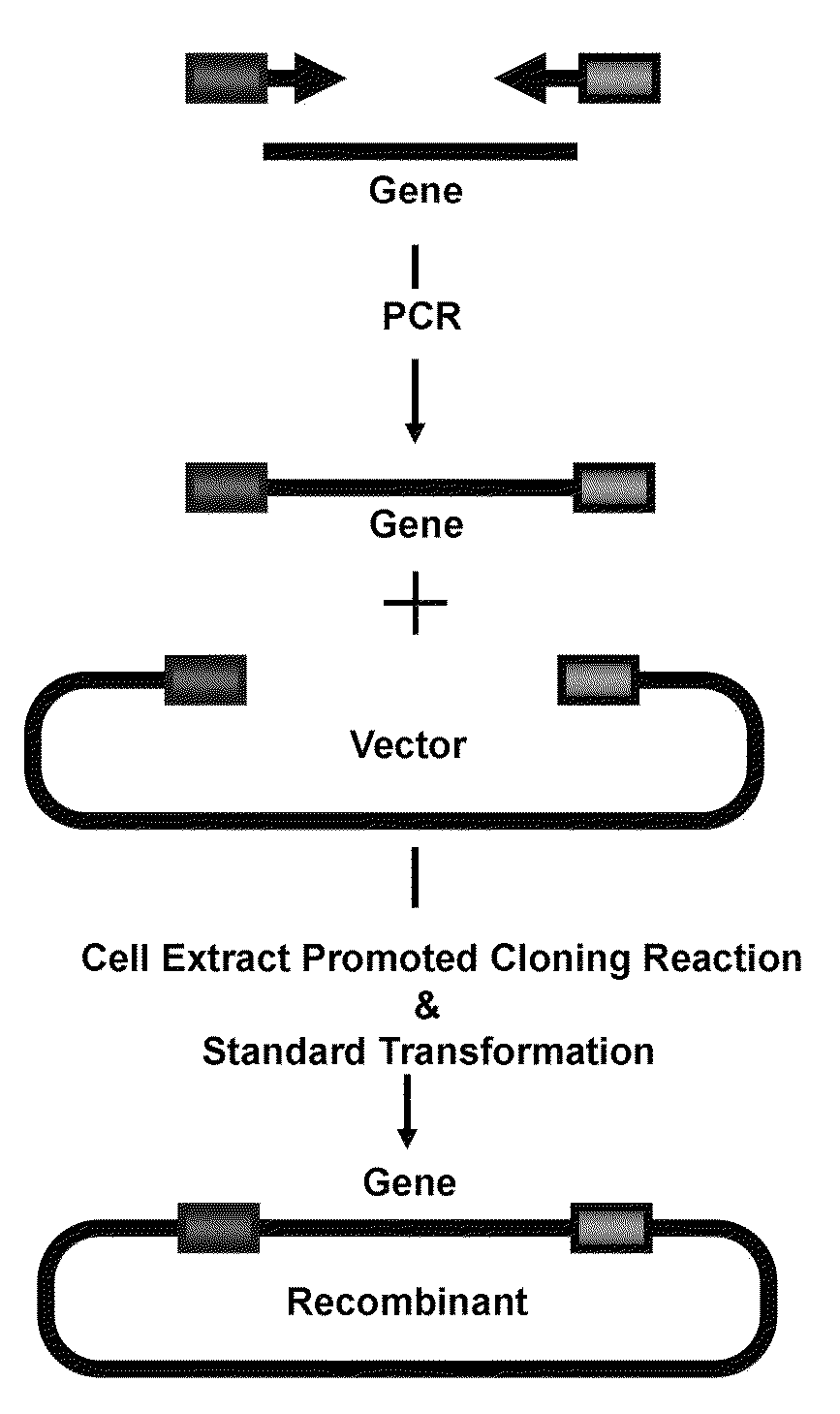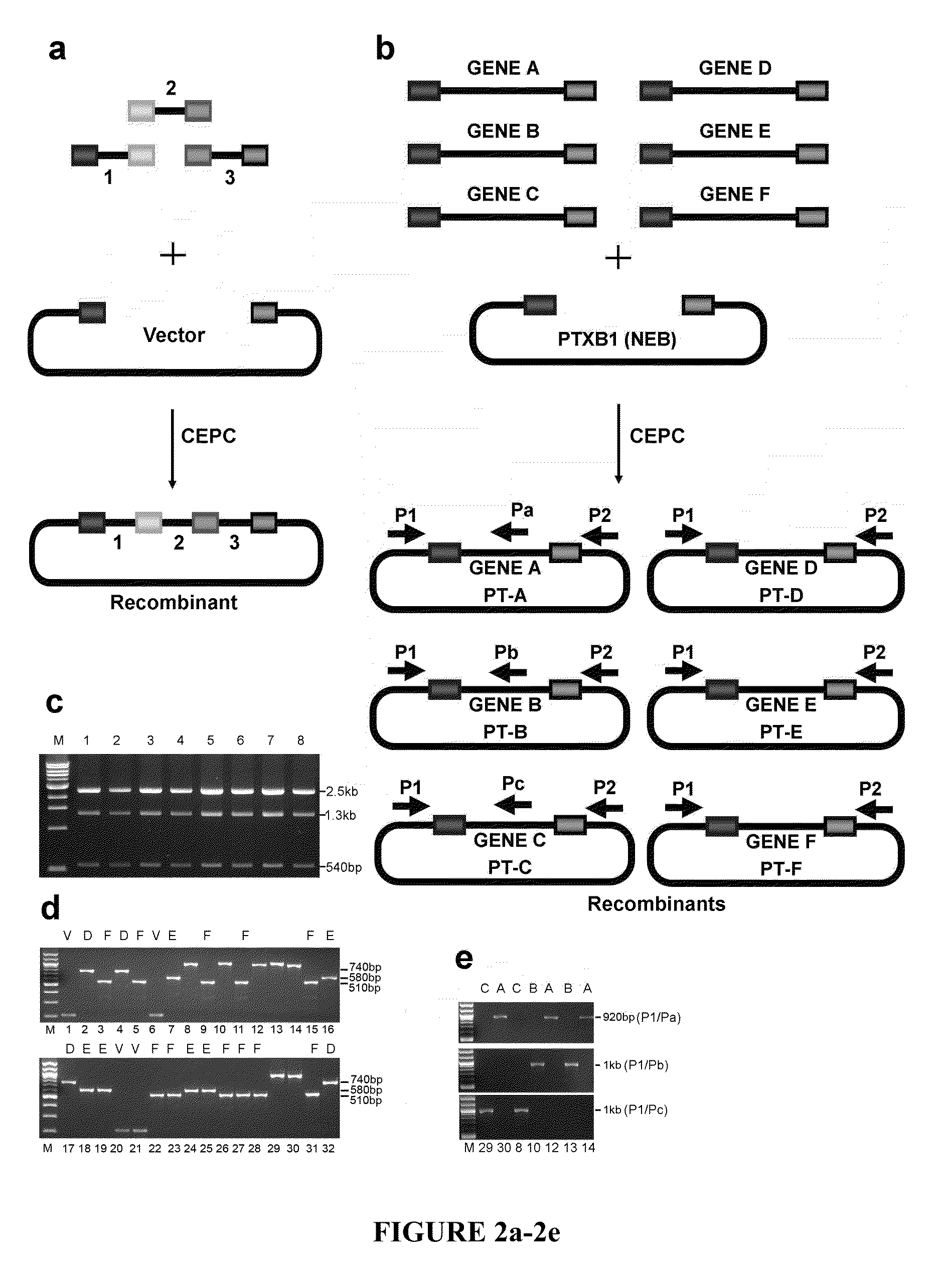Cell extract promoted cloning
a cell extract and cloning technology, applied in the field of cell extract promoted cloning, can solve the problems of high cost of procedures, unwanted sequences left at junction sites, and high cost of restriction enzymes and modifying enzymes required for these manipulations
- Summary
- Abstract
- Description
- Claims
- Application Information
AI Technical Summary
Benefits of technology
Problems solved by technology
Method used
Image
Examples
Embodiment Construction
[0009]The present invention provides a method of assembling a plurality of double-stranded DNA fragments into DNA molecules in a single in vitro recombination reaction comprising contacting in vitro the plurality of double-stranded DNA fragments with a bacterial extract derived from a RecA deficient bacterial strain so as to assemble the plurality of DNA fragments into DNA molecules, wherein each DNA fragment has a 3′ end and a 5′ end, and wherein fragments assemble with each other when the 5′ end of one fragment has 20 bp to 52 bp that are homologous with the 3′ end of another fragment. Preferably, 30 bp to 52 bp are homologous.
[0010]RecA is a bacterial protein involved in the repair and maintenance of DNA.
[0011]The bacteria can be, for example, a RecA deficient Escherichia coli strain, such as, for example, DH10B strain (Invitrogen) or JM109 strain (Promega).
[0012]The 3 prime (3′) end of DNA has a free hydroxyl group at the 3′ carbon of the sugar. The 5 prime (5′) end has a phosph...
PUM
| Property | Measurement | Unit |
|---|---|---|
| wet weight | aaaaa | aaaaa |
| total volume | aaaaa | aaaaa |
| total volume | aaaaa | aaaaa |
Abstract
Description
Claims
Application Information
 Login to View More
Login to View More - R&D
- Intellectual Property
- Life Sciences
- Materials
- Tech Scout
- Unparalleled Data Quality
- Higher Quality Content
- 60% Fewer Hallucinations
Browse by: Latest US Patents, China's latest patents, Technical Efficacy Thesaurus, Application Domain, Technology Topic, Popular Technical Reports.
© 2025 PatSnap. All rights reserved.Legal|Privacy policy|Modern Slavery Act Transparency Statement|Sitemap|About US| Contact US: help@patsnap.com



